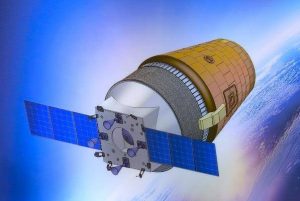Abort Mission For Gaganyaan:

Indian Space Research Organisation (ISRO) will conduct two unmanned ‘Abort Mission’ in 2022 to ensure crew safety during the Gaganyaan mission.
- This is a part of ISRO’s roadmap for the country’s first manned flight to space.
- The first test vehicle for this purpose will be launched in September 2021.
- The abort missions are meant to test the systems that can help the crew escape from the spacecraft mid-flight in case of a failure.
- ISRO already conducted a pad abort test — where the crew can escape from the spacecraft in case of an emergency at the launch pad — in 2018.
- For the abort missions, ISRO has developed test vehicles that can send the systems up to a certain height, simulate failure, and then check the escape system.
- Escape system is designed with five “quick-acting” solid fuel motors with a high burn rate propulsion system, and fins to maintain stability.
- The crew escape system will separate from the crew module by firing explosive nuts.
- ISRO’s focus is on perfecting the system that will launch and land Indians on missions to space and to protect the astronauts if the mission fails.
Gaganyaan Mission:
- Gaganyaan is a mission by the Indian Space Research Organisation (ISRO).
- Under the Gaganyaan schedule (to be launched in 2023):
- Three flights will be sent into orbit.
- There will be two unmanned flights and one human spaceflight.
- The Gaganyaan system module, called the Orbital Module will have three Indian astronauts, including a woman.
- It will circle Earth at a low-earth-orbit at an altitude of 300-400 km from earth for 5-7 days.
- GSLV Mk III, also called the LVM-3 (Launch Vehicle Mark-3,) the three-stage heavy lift launch vehicle, will be used to launch Gaganyaan as it has the necessary payload capability.




